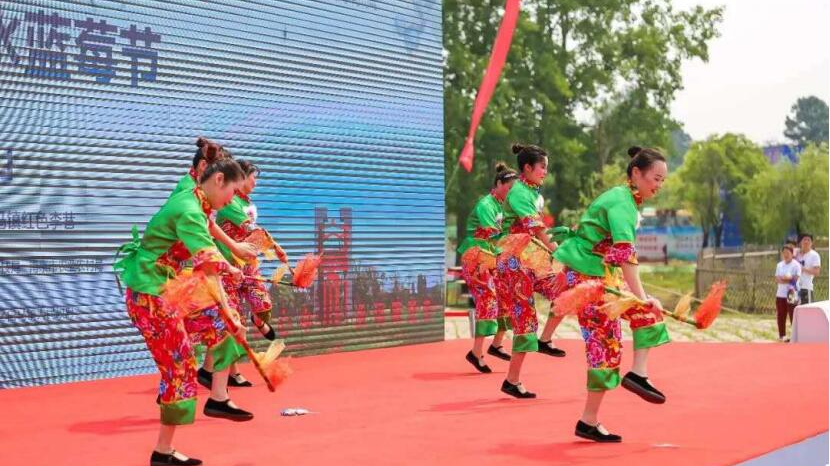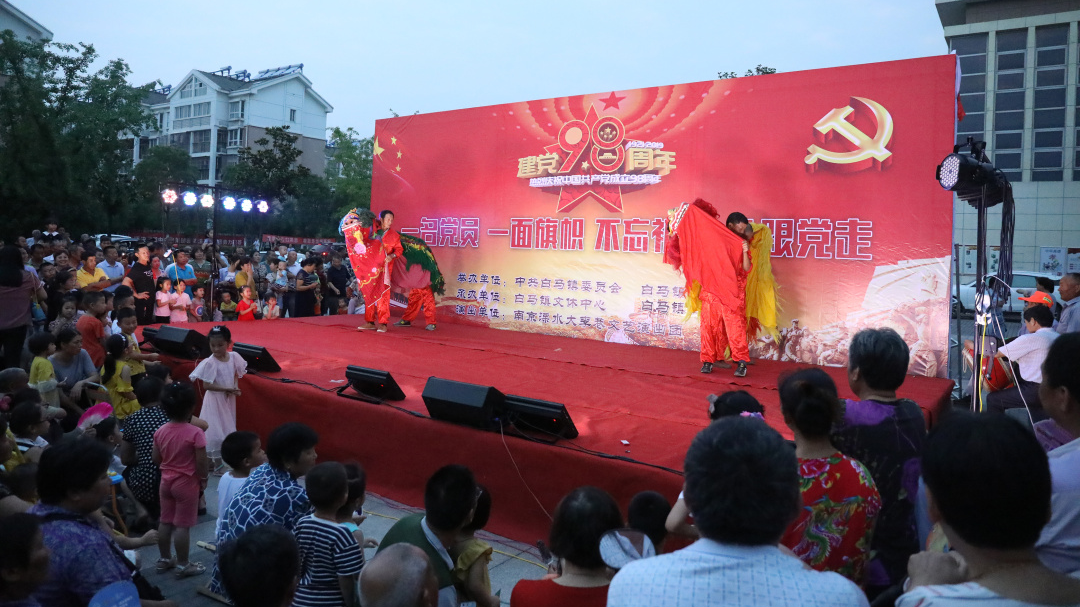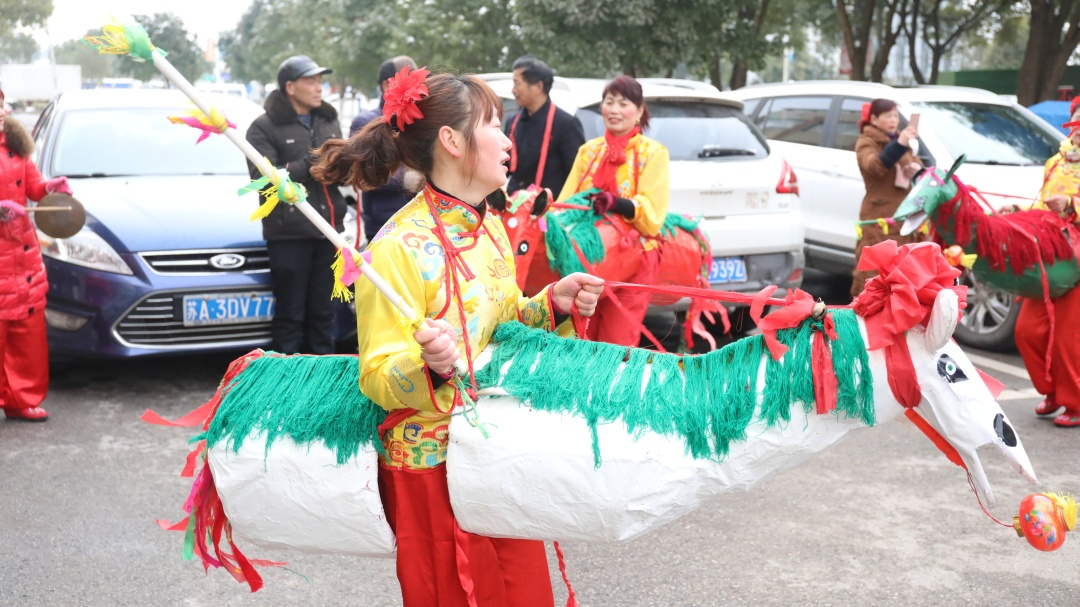-
您的位置:
- Home page
- > Impression
- > Ecotourism
- > Humanity
Intangible cultural heritages
"Play five"

"Beating five Pieces" has a history of more than 400 years. It originated in Henan province and is a part of central Plains culture. It was introduced to Jiangnan by three old artists, Hong, Nan and Mei, and spread to jiangsu, Zhejiang and Anhui provinces.
At the end of the Ming dynasty and the beginning of the Qing Dynasty, the war and famine kept on, and the people were destitute and had no place to live. In small groups, with five kinds of percussion instruments, they walked through the village and sang begging. "See flowers" sing good fortune fortune good obedient, get food for a living.
The gongs and drums of "playing five pieces" are hung around the table, with flower balls and dragon forehead on the pun knife and mouth surface on the bottom. Hang a gong on a pun knife. The hairpin is placed on the shelf and the drum is hung across the head. One person palm drum board, one person beat gong and chai, one person beat small gong, beat five pieces also called fan.
Flower ball, dragon forehead, mouth surface play the role of water card, indicating that this class can group class singing caotai opera.
There were three schools of hong, Nan and Mei, and Mei had the most disciples. At its peak, it was the eighth generation and had nearly 100 disciples. In the ninth generation there were nearly fifty, and this is now the tenth generation.
"Playing five" project, in September 2006 to lishui Cultural Bureau to declare "intangible cultural heritage", in July 2007 by lishui County cultural Bureau to Declare to Nanjing. On January 12, 2008, "Da Wu Shi" was approved as a municipal "Intangible cultural Heritage" project, and the first batch of 87 "intangible cultural heritage" list was published in the newspaper. In May 2010, Shu Zhaoxing was approved as the representative inheritor of nanjing's five intangible cultural heritages (the ninth generation). In December 2018, Lishui District Government approved Wang Peipei as the representative inheritor of Nanjing's five Intangible cultural heritages (the tenth generation).
"Beating lotus Xiang"

"Beating lotus xiang" has a history of thousands of years. It was a performing art form long before Shang Zhou. Legend has it that when King Wu attacked king Zhou, Huang Feihu had dressed up as a "beating lotus Xiang" artist mixed out of the pass, the army revolted, overthrew Yin Zhou. Xiang Yu, king of the State of Chu, used bamboo weaving similar to that of Lianxiang when he tamed his horses at the stage. During the Song Dynasty, the emperor gave beggars the title of "beating lotus Xiang". And conferred beggar Hong Qigong to play lotus xiang grandfather. In the late Ming and early Qing dynasties, "beating Lianxiang" was a means of life for women and children to beg during the famine years in Henan province. With the migration of refugees to the south, women and children fled to Jiangsu, Zhejiang and Anhui provinces together with artists such as "Da Wu Bao", "Da yu gu" and "Da Dao Qin".
Lishui white horse "da Lian Xiang" inheritance, mainly henan bamboo Lian Xiang. Hou Chunsheng, CAI Mingyang and Shu Zhaoxing, the ninth generation of students of the fifth piece of intangible cultural Heritage in Nanjing, systematically arranged the order and formula of beating Lianxiang according to the traditional method of beating Lianxiang, and taught it to the dance team of Dali Lane Art performance Troupe in Lishui, Nanjing in 2015. Luo Nianhua, the deputy head of the troupe, was responsible for the implementation and mission. Since then, the White Marlianxiang team was born and participated in the performances of "Blueberry Festival", "Plum Festival", "Beautiful Village Joy Gathering", "Spring Festival Gala" and "Water stage" for many times, which were well received by the majority of the audience.
In December 2018, Vice Captain Liu Liu was approved by lishui District Government as the representative inheritor of "Intangible Cultural Heritage" Dalianxiang at the district level.
Yuan Liushun purple teapot

Yuan Liushun, born in lishui District, Nanjing city, Jiangsu Province in 1971, graduated from Nanjing Electric Power College. Now he is a Chinese arts and crafts artist, a member of Chinese Arts and Crafts Association, a member of Jiangsu Arts and Crafts Association, and a special ceramic artist of the Art Laboratory of Nanjing University. Currently, he is the secretary general of "East and West Artists Association", the president of "East and West Artists Association National Art Committee", and the chairman of Nanjing Liushun Cultural Industry Development Co., LTD.
Purple sand pottery has a long history of more than 600 years, starting from song Dynasty, Ming Dynasty and Qing Dynasty.
Yuan Liushun learned from Li Changhong, the Master of Chinese arts and crafts, and was taught and passed down. With his diligence and solid skills, his pot-making skills became more and more advanced. He always tried to figure out the historical masterpieces and learned from the ancient rather than the ancient, with unique views and formed his own school. Its work modelling is simple and generous, conception implication is far-reaching, material is fastidious, line is smooth and clever. His works have won many awards in domestic and foreign fine works exhibitions, and are highly valued in the industry and Tibetan circles.
The lion dance

Yang Tang Lion Dance is generally divided into two ways: bowing to the door and hitting the ground. To worship the door is to do the lion dance from door to door. After the lion enters the door, it starts to worship the four doors, that is, up and down, left and right. When the lion is dancing, it will beat drums and gongs. After worshiping in a direction, someone will shout color and say some auspicious and blessing words. At the end of the lion dance, the lion dancer will take away the gift, back out, the end of the lion dance. The second is to play the field, the lion worship complete village door head, at night in the village to choose a vacant lot to play the field. The whole village comes to the ringside to watch the lion dance, where the dancers perform first on one table, then three, seven tables stacked on top of each other, up to nine. The lion dancers perform various movements, such as swallow diving in water, lion looking at guai, lion looking at the moon, little snake swimming in water, phoenix nodding, lotus rolling and lion rolling hydrangea.
The Yangtang Lion Dance Team has gone through five generations of lion Kings since it was founded in 1807. The first king Liu Kejin (1807-1827), the second King Liu Ketang (1827-1900), the third king Tai Seiyou (1900-1937), the fourth king Zhou Zhihan (1950-1966), and the fifth king Du Zhengbai (1985-2016). In September 2016, The Yangtang Lions team joined the Golden Horse Folk Dance Troupe established by Yu Xiugui, the head of the troupe. With the support and drive of the folk dance troupe, the Yangtang Lions Team has been growing and innovating, and has become the traditional folk dance of Baima Town, which is popular among the people.
Jumping lantern

Horse-lantern jumping is a folk art in the north. It originated in the Reign of Renzong in the Song Dynasty and was later introduced to Lishui Region. Many large villages have the custom of horse-lantern jumping. There are two forms of horse-lantern performance, one is to worship the door, which is to perform at the door of each household in the village, the other is to play the ground, which is to select a vacant lot in the village, the performance time from the first to the 15th day of the first month. In the early years, there were 18 horses and 26 lamps. The lantern is made of bamboo strips, pasted with transparent paper, decorated with colored paper and cloth, and performed by young men. During the performance, the performers dressed up as various historical figures, holding different weapons such as knives, guns, sticks and other weapons held by different figures, fighting each other and playing with various percussion instruments. The villagers gathered around the venue to watch the performance for more than an hour, and the scene was very lively.

